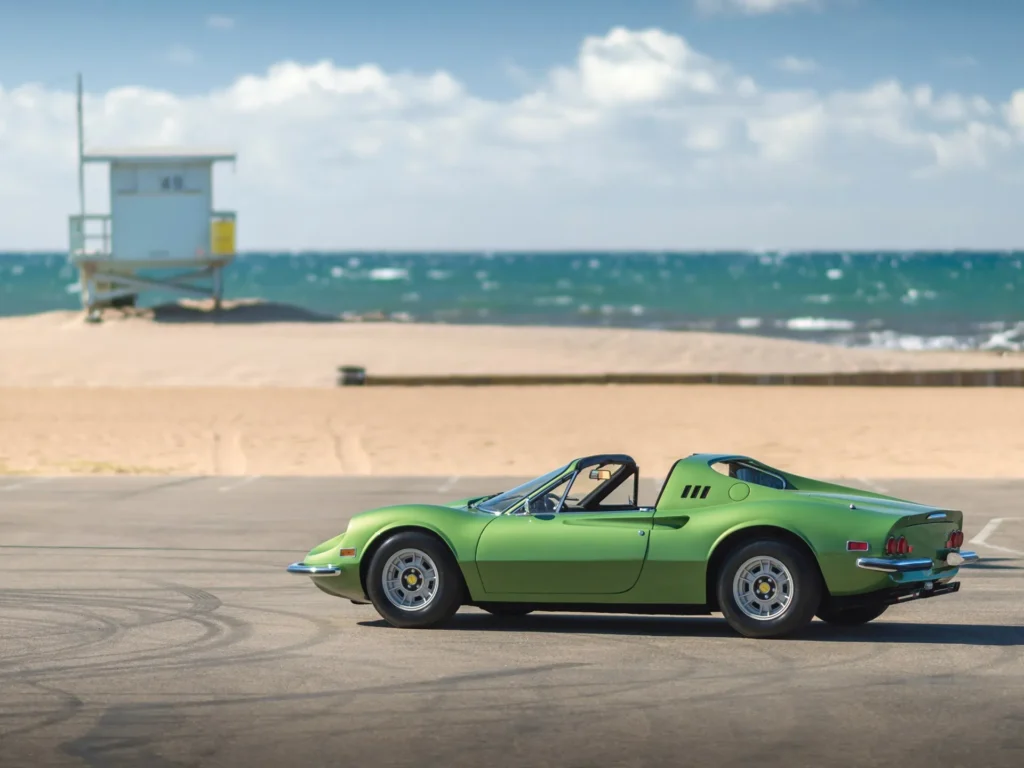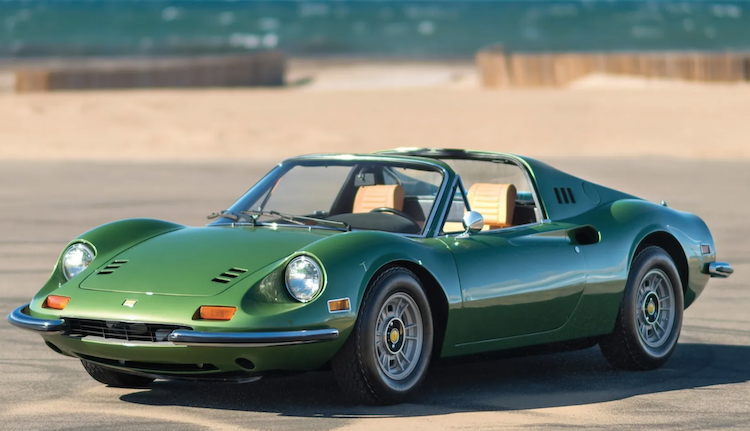Tony’s Take: When Enzo Ferrari developed the car named after his only son, Il Commendatore waved away any thought of fitting it with an eight-cylinder engine. “Average” buyers would kill themselves! Not that Enzo shed a tear for drivers who bought the farm in a Ferrari, amateur or professional. Anyway . . .
The Dino got a sweet-singing, swinging 60’s six. By the time this GTS was born – during the car’s last year of production – Ferrari had answered critics by increasing the Dino’s iron block DOHC engine from 2.0 L to 2.4 L. The result: 192 hp @ 7,600 rpm and 166 lbs⋅ft. of torque @ 5,500 rpm.

That may not sound like a lot of power for a 2,426 lbs. steel car – a modern minivan can outpace the T-top two-door. But the wonderfully balanced Dino GTS makes ample use of ever horse in its stable.
It’s the first “Ferrari” equipped with direct rack-and-pinion steering, and the weight balance is ideal. In short, the GTS is a nimble little minx that doesn’t mind being hustled, unafraid of triple digit speeds.
Besides, beauty. RF says the 246 GTS’ curves changed his life. That Pininfarina designers Aldo Brovarone and Leonardo Fioravanti created an automotive Mona Lisa. Who am I to disagree?

For decades, the Dino GTS was as cheap as chips. In the years immediately prior to the 2018 stock market crash, the GTS market went mental. Afterwards? Not so much.
GTS auction prices recovered from the stock market shock in time for the post-pandemic gold rush, but the model still hasn’t enjoyed (if that’s the right word) the 40 percent price bump given “real” and rare Ferraris.
| 1974 Ferrari Dino 246 GTS | 39,654 mi | 8/18/22 | $401k |
| 1974 Ferrari Dino 246 GTS | TMU | 6/4/22 | $549,905 |
| 1974 Ferrari Dino 246 GTS | 27,986 mi | 3/4/22 | $428,500 |
Of the threesome above, the top earner was a coveted “chairs and flares” GTS (Daytona-style seats and wider wheel arches). This one ain’t that. BUT this Dino is Ferrari Classiche-certified with ridiculously low miles (9k) – one of only three in Verde Medio Nijinsky. [Note: restored color.]
I say it’ll blow those cars out of the proverbial water, setting the new high water mark for the GTS. Downside: Constant maintenance and constantly telling people “It’s a Dino not a Ferrari.”
| Make | Ferrari |
| Model | 246 Dino GTS |
| Year | 1974 |
| Total Produced | 1,274 GTS, 3 in this color |
| Number of Owners | 8 |
| Mileage | 9k miles |
| Condition | ★ ★ ★ ★ ★ |
| Price When New | $16,745 Inflation Calculator |
| Highest Previous Price | $533,178.89 (5/12/18) |
| Auction House | RM Sotheby’s |
| Auction Date | 9/31/22 – 3/10/22 |
| My Prediction | $635k – $700k |
| Hammered At |


